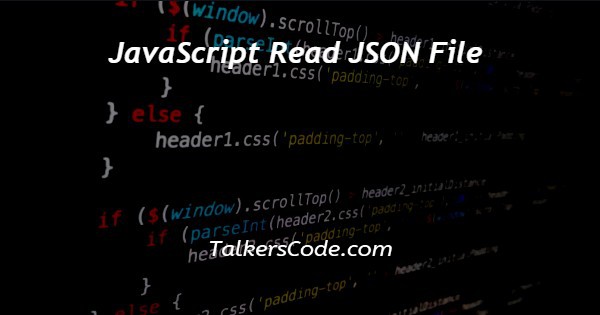In this article we will show you the solution of JavaScript read JSON file, a text-based standard for encoding structured data based on JavaScript object syntax is called JavaScript Object Notation (JSON).
A common application of this technology is for data transmission (for example, from the server to the client so it can be displayed on a web page, or vice versa).
As a result, we provide you with all the information you need in this article to deal with JSON using JavaScript, including parsing JSON so you can access its data and producing JSON. Now let us move to the reading json file in javascript.
Step By Step Guide On JavaScript Read JSON File :-
JSON is a text-based data format that adheres to the Douglas Crockford-popularized JavaScript object syntax.
Even though it closely resembles JavaScript object literal syntax, JSON may be read (parsed), generated, and utilised independently of JavaScript in many programming environments.
When transferring data over a network, JSON can be used as a string. Using JavaScript requires transforming the data into native objects.
This is not a significant problem because JavaScript offers a global JSON object with methods for converting between the two.
Essentially just a text file with the extension.json and the MIME type application/json, a JSON string can be stored in its own file.
JSON is a string that closely mimics the format of a JavaScript object literal. JavaScript objects support the same fundamental data types as JSON, including strings, numbers, arrays, booleans, and other object literals. As a result, you can create a data hierarchy.
Make that the data returned is in JSON format when retrieving data from other sources or sites.You can use the data in your application.
Sometimes we may need to read this JSON data from a file, whether we're working locally or when we upload the data file to a server.
The Fetch API is one common way we can read a JSON file, whether it is local or transferred to a server. The syntax is the same for both. The URL would be the only variation.
Assume, for instance, that the JSON data is contained in a local file called data.json that is located in the project's folder.
When we wish to read a JSON file into our JavaScript file from a local file or an external server, the fetch API is the preferred approach to employ.
The import statement is a different approach we can take in addition to sending an HTTP request. There are a few issues with this approach, but we shall deal with them all.
As in the last part, let's say we have a JSON file called user.json that contains user information. With the help of the import statement, we can read the JSON data in JavaScript.
user.json
{
"id": 1,
"name": "Mudit Jain",
"age": 27
}
user.js
const data = require('./user.json');
console.log(data);
- Firstly, we create json file in which we create some data.
- Next, in user.js file we use the global require function to synchronously load JSON files
- After that with the help of console.log we print that data.
Conclusion :-
Hence, we have successfully learnt about the concept of json and reading json file in JavaScript. And also, we learnt how to import our json file in JavaScript.
I hope this article on JavaScript read JSON file helps you and the steps and method mentioned above are easy to follow and implement.














